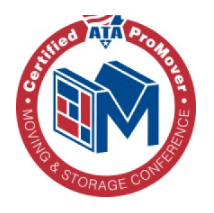Your Guide to the Best Way to Move Furniture Across Country

Cross-country furniture moving costs can range from $4,000 to $9,000, so choosing between professional services and DIY solutions is a critical financial decision. Each piece of furniture represents unique challenges, from delicate antiques requiring specialized handling to bulky sectionals that demand precise logistics.
The complexity of long-distance furniture transportation extends beyond simple loading and unloading – it encompasses careful planning, proper protection, and strategic timing to ensure both cost-effectiveness and item safety.
Professional moving services offer detailed solutions with built-in insurance protection while self-moving alternatives provide budget-friendly options for the hands-on relocator. The key lies in understanding which approach aligns with your specific circumstances, timeline, and budget constraints.
From specialized white-glove services handling precious heirlooms to portable storage containers offering flexible loading schedules, today’s market provides diverse solutions for every moving scenario.
This detailed exploration breaks down proven strategies for transporting furniture across state lines, including cost-saving techniques, protection methods, and timing considerations.
By examining real costs, practical logistics, and essential planning steps, you’ll discover the most suitable approach for your long-distance furniture move while avoiding common pitfalls that can impact both your belongings and your budget.
Pre-Move Planning And Assessment
Precise planning and careful assessment form the foundation of successful cross-country furniture moving. Industry research shows that thorough preparation can reduce moving costs by up to 25% and significantly decrease the risk of damage during transit.
Evaluating Your Furniture Inventory
Creating A Detailed List
- Document each furniture piece room by room, including:
- Sofas, tables, beds, and storage units
- Material composition and construction type
- Special handling requirements
- Approximate age and value
This thorough inventory serves as essential documentation for insurance purposes and enables accurate cost estimation for your cross-country move.
Measuring Large Pieces
Precise measurements are essential for planning your cross-country furniture transport. Record:
- Height, width, and depth of each major piece
- Dimensions of disassembled components
- Clearance requirements for doorways and hallways
- Weight estimates for heavy items
These specifications help determine appropriate truck space and identify potential logistical challenges at both origin and destination points.
Documenting Current Conditions
Take high-resolution photographs of each furniture piece from multiple angles. Pay particular attention to:
- Existing wear patterns or damage
- Structural integrity of joints and weight-bearing elements
- Special features requiring protection
- Manufacturer labels and serial numbers
This detailed documentation establishes a clear baseline for insurance purposes and helps assess which pieces warrant long-distance transport.
Setting A Realistic Budget
Cost Factors To Consider
Cross-country moving costs typically range from $4,000 to $9,000 for full-service relocations. Primary cost determinants include:
- Total distance and fuel costs
- Furniture volume and weight
- Service level selection
- Specialized handling requirements
- Insurance coverage options
Hidden Expenses To Anticipate
Beyond base moving costs, prepare for additional expenses:
- Packing materials and supplies
- Storage fees (if needed)
- Furniture disassembly/reassembly services
- Stair carries or long-distance carries
- Equipment rental fees
- Professional mover gratuities
- Emergency fund (10-15% of total budget)
Timeline Development
Optimal Moving Seasons
Strategic timing can significantly impact your moving costs:
- Off-peak season (October-April): Lower rates, better availability
- Peak season (May-September): Higher rates, limited scheduling options
- Weather considerations: Plan around severe weather patterns
- Regional factors: Consider local events or tourism peaks
Scheduling Considerations
Plan your move with these key timeframes in mind:
- Book services 8-12 weeks in advance
- Allow extra time during peak season
- Coordinate with:
- Real estate closings
- Work commitments
- School calendars
- Delivery window availability
Include 2-3 buffer days for unexpected delays and ensure delivery windows align with your arrival schedule at the destination.
Professional Moving Services
Professional moving services transform the challenge of cross-country furniture transportation into a manageable experience.
With 121 years of industry expertise, Nelson Westerberg has developed detailed strategies that address every aspect of the moving process, from basic transport to specialized handling of valuable items. The types of moving companies vary widely, each offering unique services tailored to specific needs. Nelson Westerberg, however, stands out.
Full-Service Moving Companies
Services Included
Full-service movers deliver complete relocation solutions that eliminate the stress of moving day. Professional teams arrive equipped with:
- Industry-grade packing materials and specialized equipment
- Systematic furniture wrapping and protection protocols
- Professional loading and unloading techniques
- Detailed inventory tracking systems
- Furniture disassembly and reassembly services
Cost Structure
Cross-country relocations with full-service movers typically range from $4,000 to $9,000. Several key factors influence the final cost:
- Total distance of the move
- Volume and weight of furniture
- Selected service level
- Seasonal timing and availability
- Additional services (custom crating, specialized handling)
Professional moving companies offer clear cost breakdowns, helping you understand the costs of hiring moving services and manage your budget effectively.
Insurance Coverage
Protection for your belongings comes standard with professional moving services:
- Released value protection at no additional cost
- Complete value protection for total coverage
- Specialized insurance options for high-value items
- Repair, replacement, or reimbursement guarantees
- Additional coverage options for unique circumstances
Specialized Furniture Movers
White Glove Services
White glove moving represents the ultimate standard of professional furniture transportation, featuring:
- Premium-grade packing materials
- Custom crating solutions
- Climate-controlled transport
- Precise placement at the destination
- Precise attention to every detail
Antique And Valuable Items Handling
Irreplaceable pieces receive exceptional care through:
- Custom-built protective crates
- Advanced padding systems
- Temperature-controlled environments
- Material-specific handling protocols
- Expert teams trained in preservation techniques
When moving long distances or handling valuables, specialized furniture movers are essential to ensure the safety of your most cherished items.
Hybrid Moving Options
Labor-Only Services
Labor-only services combine professional expertise with cost-effective solutions:
- Professional loading and unloading assistance
- Trained teams using proper lifting techniques
- Furniture protection methods
- Client-managed transportation
- Flexible scheduling options
Partial Moving Assistance
Customize your moving experience by selecting specific professional services:
- Selective item packing
- Targeted loading assistance
- Specialized handling for specific pieces
- A mix of DIY and professional support
- Cost-effective solutions for budget management
Self-Moving Solutions
The decision between professional moving services and self-moving options often comes down to budget considerations and personal preferences. Research shows that self-moving can reduce relocation costs by 40-60% compared to full-service moves, making it an attractive choice for cost-conscious households.
Rental Trucks
Size Selection Guide
- 15-foot trucks: Ideal for studio/1-bedroom apartments (2,500-3,000 lbs capacity)
- 20-foot trucks: Suitable for 2-3 bedroom homes (5,000-6,000 lbs capacity)
- 26-foot trucks: Designed for 4+ bedroom homes (8,000-10,000 lbs capacity)
Remember to account for 20-30% additional space for proper furniture padding and protection. Industry data indicates that most DIY movers initially underestimate their space requirements by 25%.
Cost Analysis
A typical cross-country rental truck move includes:
- Base daily rate ($19.95-$39.95 per day)
- Mileage charges ($0.69-$0.99 per mile)
- Fuel costs (8-12 MPG efficiency)
- Insurance coverage ($15-30 per day)
- Equipment rentals (dollies, pads, straps)
- Road tolls and overnight accommodations
Understanding the costs of renting a moving truck is critical for budgeting, as these expenses can add up depending on various things such as travel distance and duration.
Driving Considerations
Safe operation of moving trucks requires:
- Maintaining 50% more following distance than passenger vehicles
- Planning routes that avoid low bridges (13’6″ standard clearance)
- Allowing wider turning radiuses
- Adjusting driving techniques for mountain passes and adverse weather
- Understanding weight distribution impacts on braking and handling
When choosing the right vehicle, considering some of the top moving truck services can help ensure a smooth and reliable experience.
Portable Storage Containers
Loading Flexibility
Modern portable storage solutions provide:
- 3-7 day standard loading windows
- Ground-level access for easier furniture placement
- Multiple container size options (7′, 12′, 16′ lengths)
- Ability to pause and resume loading as needed
- Weather-protected staging areas
Security Features
Industry-standard security measures include:
- All-steel construction with weather-resistant seals
- High-grade lockable panels
- GPS tracking systems
- Impact-resistant doors
- Temperature and humidity monitoring
- Individual container sealing records
Delivery Options
Flexible delivery services cover:
- Door-to-door transportation
- Temporary storage at secure facilities
- Multiple container delivery scheduling
- Re-routing options during transit
- Storage duration from 1 month to 1 year
- Climate-controlled storage availability
Freight Trailers
Loading Requirements
Essential freight loading protocols include:
- 24-48 hour loading windows
- Minimum space requirements (5 linear feet)
- Professional loading assistance is available
- Weight distribution guidelines
- Proper furniture wrapping standards
- Secure bracing requirements
Transit Times
Cross-country freight delivery typically involves:
- 5-10 business day transit windows
- Real-time shipment tracking
- Guaranteed delivery dates
- Terminal-to-terminal service options
- Scheduled delivery appointments
- Weather delay contingencies
Cost Effectiveness
Freight services offer value through:
- Pay-per-foot pricing models
- Consolidated shipping rates
- Fuel surcharge elimination
- Reduced insurance costs
- No vehicle wear concerns
- Professional transport handling
For households moving between states, freight trailers can offer added convenience and flexibility tailored to long-distance needs.
Furniture Protection Strategies
Moving furniture across the country demands precise protection methods and proven techniques. A well-planned protection strategy safeguards your valuable pieces from transit damage while providing peace of mind during your long-distance move.
Professional Packing Materials
Protective Wrapping
High-quality moving blankets act as essential shields against damage during transit. Begin with a moisture-resistant plastic wrap layer, then secure furniture pads or blankets with strong packing tape.
Specialized furniture covers offer crucial protection for upholstered items, guarding against soil, tears, and environmental factors throughout the journey. For additional guidance, exploring some essential packing tips for moves can help you learn a thing or two that will help you protect your furniture.
Cushioning Options
Impact protection requires strategic placement of cushioning materials. Install corner protectors on wooden furniture edges, while applying bubble wrap to shield delicate surfaces.
Glass elements and mirrors need high-density foam sheets for maximum protection. Lightweight air-filled cushioning materials absorb road vibrations and sudden movements without adding significant weight to your shipment.
Disassembly Guidelines
Tools Required
A well-organized moving toolkit should include:
- Multiple sizes of flathead and Phillips screwdrivers
- Complete set of Allen wrenches
- Adjustable wrenches for various bolt sizes
- Power drill with interchangeable bits
- Furniture-specific hardware and components
- Quality packing tape and scissors
Organization Tips
Document each disassembly step with clear photographs for reference. Store hardware pieces in labeled, sealed plastic bags and secure them directly to their corresponding furniture parts.
Create detailed notes about the disassembly sequence, making reassembly straightforward at your destination. Complex furniture pieces benefit from custom assembly guides with step-by-step instructions.
Loading Techniques
Weight Distribution
Start your loading process by positioning heavier furniture pieces toward the front of the truck and close to the floor. Build a solid foundation using items of similar size and weight. Arrange lighter and more fragile pieces on top, following a natural pyramid structure that maintains stability throughout the journey.
Securing Methods
Professional-grade furniture straps and ratchet ties prevent unwanted movement during transport. Install adjustable load bars to create distinct compartments within the truck. Place moving blankets between furniture pieces as protective barriers. Secure large items with multiple anchor points to eliminate shifting during sudden stops or turns. This detailed approach ensures your furniture arrives safely at its new destination.
Cost-Saving Techniques
Moving furniture across the country becomes more affordable when you implement smart cost-reduction strategies.
Industry research shows that thoughtful planning can reduce moving costs by 25-40% while ensuring your furniture arrives safely at its destination. To better understand the estimated cost of moving furniture across the country, careful budgeting and research are essential.
Timing Strategies
Off-Peak Moving
The moving industry experiences significant seasonal fluctuations, with rates dropping 20-30% during off-peak months (October through April). Mid-week moves typically cost 10-15% less than weekend relocations, while mid-month bookings often secure better rates than month-end dates.
- Best days: Tuesday through Thursday
- Ideal months: October, November, January, February
- Peak season to avoid: Memorial Day through Labor Day
Flexible Dates
A flexible moving schedule opens opportunities for substantial savings. Consider these advantages:
- Access to last-minute promotional rates
- Ability to negotiate better deals during slower periods
- Potential for multi-load discounts
- 7-10 day window maximizes cost-saving opportunities
Supply Sourcing
Free Moving Materials
Smart sourcing of packing materials can reduce expenses without compromising protection:
- Collect sturdy boxes from local bookstores and wine shops
- Use household textiles as protective wrapping
- Blankets for furniture padding
- Towels for dishware
- Bedding for electronics
- Connect with local moving groups on social media for free supplies
- Check online marketplaces for recently completed movers’ materials
Rental Equipment
Research shows renting moving equipment costs 40-60% less than purchasing new items:
- Daily rental options for furniture dollies
- Short-term contracts for moving blankets
- Shared equipment arrangements with local movers
- Bundle deals from moving supply companies
Insurance Alternatives
Coverage Options
Protection for your furniture doesn’t require premium-priced moving insurance:
- Review existing homeowner’s/renter’s policy coverage
- Compare third-party moving insurance rates
- Analyze deductible options across providers
- Research supplemental coverage for high-value items
Value Protection
Proper documentation and strategic coverage choices protect your investment:
- Photograph furniture from multiple angles
- Create detailed condition reports
- List estimated replacement values
- Match protection levels to item worth:
- Basic coverage for standard pieces
- Full protection for antiques
- Specialized insurance for art and collectibles
Frequently Asked Questions
- How far in advance should I book a cross-country furniture move?
Industry data shows that booking your cross-country furniture move 8-12 weeks in advance typically secures the best rates and scheduling options. During peak moving season (May through September), extend this timeline to 12-16 weeks to guarantee your preferred dates.
Early planning allows time to research moving companies, compare service packages, and create a detailed moving timeline that aligns with your relocation needs.
- What items should I avoid moving across the country?
Federal regulations prohibit the transport of perishables, hazardous materials, and certain chemicals across state lines. Beyond legal restrictions, practical considerations suggest avoiding the transport of:
- Particle board furniture susceptible to damage
- Outdated or non-functional electronics
- Items requiring extensive repairs
- Plants and perishable goods
- Propane tanks and flammable materials
This selective approach reduces moving costs while ensuring the safe transport of your valuable possessions.
- How can I track my furniture during transit?
Modern moving technology provides real-time visibility of your belongings throughout their journey. Nelson Westerberg’s TRAXX® operating system delivers precise location updates and estimated arrival times directly to your device.
A dedicated move coordinator maintains regular communication, providing status updates and addressing any questions about your furniture’s transit progress.
- What insurance coverage do I need for cross-country furniture moving?
Professional moving standards recommend full value protection coverage for cross-country relocations. While basic released value protection offers minimal coverage at $0.60 per pound per article, full protection ensures total replacement value for damaged or lost items. Consider these protection levels:
- Basic Released Value Protection (included at no cost)
- Full Value Protection (recommended for most moves)
- Additional Third-Party Insurance (ideal for high-value items)
- Specialized Coverage (for antiques and artwork)
Document your furniture’s condition with detailed photos and descriptions before transit begins.
- Which moving method is best for antique furniture?
White glove moving services represent the gold standard for antique furniture transportation. This premium service includes:
- Custom crating and padding
- Climate-controlled vehicles
- Specialized handling equipment
- Expert movers trained in antique care
- Detailed condition documentation
- Direct transport options
While white glove service commands higher rates than standard moving options, it provides essential protection for irreplaceable pieces during cross-country transit.
Conclusion
Moving furniture across the country demands strategic planning that balances your unique circumstances, budget constraints, and timeline requirements. Each moving method – from full-service professionals to portable containers and freight shipping – offers distinct advantages worth careful consideration. Research shows that successful long-distance furniture moves hinge on three critical elements:
- Detailed inventory documentation
-
- Appropriate protection methods for valuable pieces
- Strategic timing and logistics planning
While cross-country moving costs typically range from $4,000 to $9,000, focusing solely on price can lead to costly oversights. Industry data indicates that professional moving services, though representing a higher initial investment, deliver detailed and well-rounded benefits:
-
- Full insurance coverage and asset protection
- Real-time shipment tracking capabilities
- Professional packing and handling expertise
- Damage prevention through specialized equipment
The success of your cross-country furniture move depends on methodical preparation and execution. Start by conducting a thorough furniture assessment, identifying optimal moving dates, and implementing proper protection protocols for each piece.
Nelson Westerberg brings over 100 years of specialized moving expertise to transform complex cross-country relocations into streamlined, efficient transitions that protect your valuable furniture investments.
Related Articles
5 Best Moving Truck Companies: Compare & Choose Your Perfect Fit

Moving across town or the country demands more than just any truck rental service – it requires a reliable partner who grasps the subtle details of relocation. The industry of moving truck companies has evolved significantly, with industry leaders offering distinct advantages for different moving scenarios. Nelson Westerberg stands at the forefront of this evolution, […]
Read MoreHow to Move from One House to Another Without Losing Your Mind

Moving a house represents one of life’s most significant logistical challenges, with the average American household containing over 300,000 items to sort, pack, and transport. This complexity often leaves even the most organized individuals feeling overwhelmed by the sheer scope of the task ahead. A successful relocation hinges on methodical planning and precise execution. At […]
Read More




